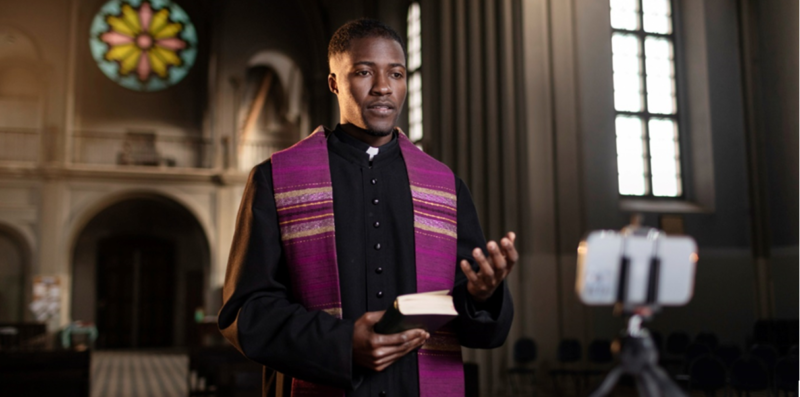Imagine a world with inclusive worship spaces as sanctuaries where everyone feels welcomed and valued regardless of abilities and backgrounds. This is a flourishing reality in many communities. This article explores the inclusivity transformation of worship spaces, its challenges and solutions, technology, and community engagement. Inclusivity in worship is an act of faith and a testament to shared humanity.
Understanding Inclusivity in Worship
Worship is inclusive when religious spaces and practices are accessible to everyone. People must feel welcome despite disabilities, social status, and cultural background. Inclusivity attests to the main principles of acceptance and equality of many faiths.
Over time, worship spaces have significantly transformed to become more inclusive. Medieval churches were at the heart of communities and served diverse congregations. They were, unfortunately, not very accessible to people with disabilities.
Nowadays, people are more aware of the need for worship places to be more inclusive. Efforts are made to make physical accessibility changes, like creating ramps and introducing hearing loops. Religious practices are becoming more considerate about including different cultures and social statuses.
Inclusive worship doesn’t just mean making physical changes. A welcoming and inclusive environment must be promoted. This venture can be accomplished through inclusive language in services and community engagement. Educational programs can help people understand and accept diversity.
While these changes make worship spaces more accessible, they also attest to the inclusive nature of most religions.
Challenges to Inclusivity in Worship Spaces
Many congregations face significant physical, cultural, and social barriers to inclusivity.
Physical barriers include no wheelchair access, poor seating arrangements, and bad acoustics. This can discourage people with mobile and sensory disabilities from fully joining religious services. That is why worship spaces must prioritize accessibility improvements. This includes having clear signage, installing ramps, and having hearing aid-compatible sound systems.
Cultural and social barriers include no representation of diverse cultural practices and little understanding of different social backgrounds. Other languages also pose problems to inclusivity. Services that are only in English could make non-native speakers feel unwelcome. Improve inclusivity by celebrating diverse religious holidays, hosting social gatherings, and using multilingual resources.
Worship spaces can turn into welcoming and inclusive communities. They need to understand and solve challenges faced by disabled individuals and people from different cultures. This coincides with the values of diversity and inclusivity. It also reinforces the communal bonds that show the true nature of worship.
Designing Physically Accessible Worship Spaces
The design of worship spaces that are physically accessible greatly increases inclusivity. Implementing these designs ensures everyone’s participation in religious activities, especially those with disabilities.
These plans must comply with the UK Equality Act 2010. These changes show that the worship space respects and understands all community members. Implementing these changes creates a sense of community spirit and belonging. Worship spaces then become welcoming to more diverse people.
Main Architectural Considerations
Implement step-free access and ramps to accommodate persons in wheelchairs and with physical disabilities. Seats must have enough space for wheelchairs and allow comfortable viewing angles for everyone. Installing tactile flooring will help visually impaired members to navigate better.
Use echo and background noise reduction materials during the construction of worship spaces. These extra sounds pose challenges for hearing-impaired people. Acoustic panels and proper soundproofing can make spoken words clearer and easier to understand.
Inclusive Facilities
Disability-accessible restrooms have handrails and enough space for wheelchairs to move around. Give easy access with disabled parking spaces close to entrances. Provide audio equipment that can help hearing impaired members hear services better. This technology reduces background noise and improves sound clarity.
Cultural Sensitivity and Social Inclusion

Worship inclusivity isn’t just about physical access and includes cultural sensitivity and social inclusion. Places with rich cultural diversity need worship spaces with different languages and social groups. Language barriers must be overcome, and a welcoming environment must be created.
Why It Matters
Cultural awareness in worship places shows respect and unity. The UK has a very multicultural community. Barriers separating these cultures in places of worship must be broken down.
Overcoming Language Barriers
Use some different multilingual resources and services to overcome this problem. The linguistic diversity of congregations is shown when translations of services or scriptures in different languages are offered. These translations help with comprehension and show respect for differing cultural backgrounds.
Creating a Welcoming Environment
Diversify community outreach programs to include more cultures. Host events and celebrations that include and recognize different cultural traditions. This initiative enhances mutual understanding between different cultures. The worship experience becomes more inclusive and enriching for everyone.
Advice
Provide translated materials for those who don’t speak English. Use sign language interpretation for hearing-impaired members. Hold awareness workshops for volunteers and employees. Celebrating multicultural festivals will promote inclusivity.
Technology as an Enabler of Inclusivity
Assistive technologies and online platforms are transforming inclusivity in worship. Worship spaces can use hearing loops and subtitle systems to include hearing-impaired members. These technologies eliminate barriers that tend to isolate those who can’t hear. They can now fully participate in services.
More people are now included because digital platforms let them connect through virtual and online worship. The COVID-19 pandemic increased this innovation. People who couldn’t physically attend can now livestream services, prayer groups, and study sessions.
Digital technology allows elderly and disabled members to participate in worship sessions and activities. People interested in technology and digital innovations are now more attracted to the idea of worship. This innovation draws members from all ages to participate in worship events.
Worship establishments can see the implementation of these technologies as morally righteously important. It leads to a religious community that’s stronger and more diverse. These tools can make worship spaces entirely welcoming despite members’ geographical locations or physical abilities.
Inclusive Practices and Policies
Worship services and ceremonies must be adjusted to embrace and include all members. Deaf and blind persons are more included in services when sign language and Braille are used. When traditions are altered to include different cultural groups, it improves people’s spiritual experiences. More people feel they belong because of the increased appreciation and respect for diversity.
Employees and volunteers need inclusivity and diversity training to help them create welcoming environments. Training should include understanding cultural sensitivities, different disabilities, and effective ways to communicate with everyone. Knowing and understanding non-verbal communication cues and simple phrases in different languages greatly enhance socializing with more worshippers.
Inclusivity experts can give more information about developing training programs. They can offer advice on how to revise rituals for more inclusivity. Community representatives can advise places of worship on the unique needs and preferences of certain groups of people.
By being treated equally and having access to services, these practices align with the UK Equality Act 2010. It aligns with the core values of most faiths, including community, compassion, and understanding. Worship spaces that implement these practices are more inclusive and diverse.
Community Engagement and Feedback
For worship places to be inclusive, they must engage the community in decision-making processes by creating regular feedback mechanisms. Changes will meet the congregation’s real needs when members are involved in discussions about inclusivity and accessibility. This lets the community feel a sense of ownership and respect from places of worship.
Engagement and feedback matter because inclusivity doesn’t have a one-size-fits-all solution. The communities of every worship space are unique and have diverse needs. When communities are part of decision-making processes, worship establishments are ensured that inclusivity strategies are well-informed and effective.
Implementation of suggestions can start with creating a diverse committee that represents various groups from the community. They must explore the utility solutions tailored for places of worship by Utility Bidder so that infrastructure supports community needs. Get feedback and input about member needs and requirements through focus groups, surveys, and open forums. Ensure that implemented changes are still effective, and be open-minded about adjusting according to feedback.
Involving the community in decision-making and using a strong feedback system ensures inclusivity for all community members. Utility Bidder provides cost-effective utility services to worship places so they can responsibly manage resources and stay on budget. Their services meet specific worship place utility needs, helping them to be financially efficient and sustainable.
Conclusion
True inclusivity in worship spaces means accessibility for those who are physically disabled, culturally different, and from various social classes. Worship spaces can become places of equality and acceptance through practical changes, technological innovations, and community-driven programs. This inclusivity is a celebration of diversity through the values of different beliefs and the collective spirit of humanity.
Worship establishments can visit https://timesinternational.net/ for more ideas of inclusivity and accessibility.
